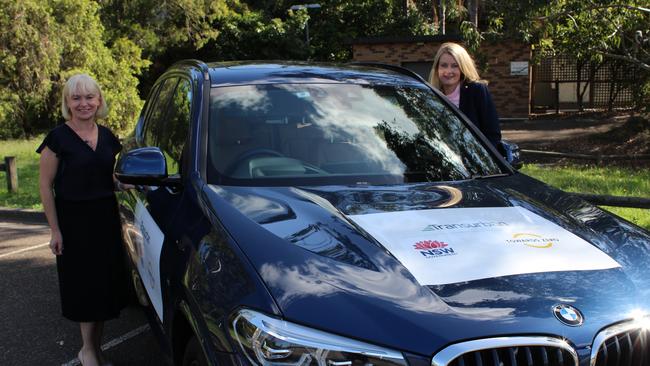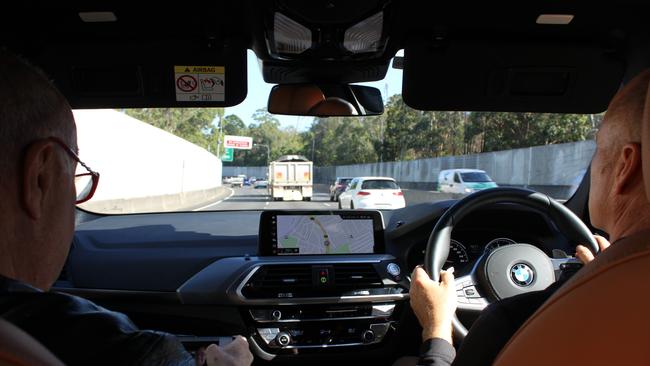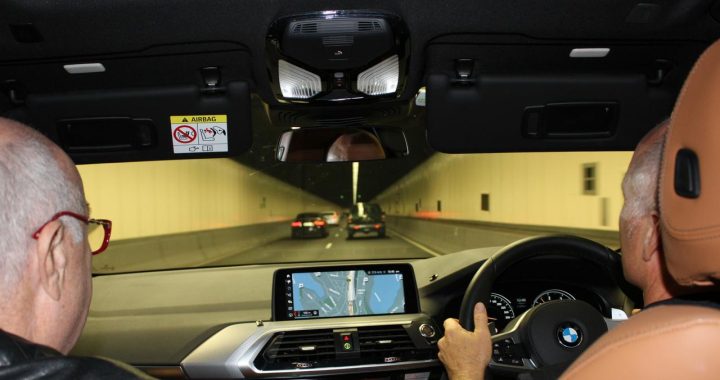How ready are Australian roads for autonomous cars?
Last week I travelled Sydney’s roads with operator Transurban, which has begun an extensive six-month trial of seeing how well cars from seven manufacturers adapt to urban road conditions.
Some eight to 10 cars fitted with semi-autonomous systems are being trialled from now until August. First off the rank was a Hyundai i30. My spin around Sydney took place in the second trial, a BMW X3 xDrive. All of these cars are on the market now.
There are different approaches to autonomous car transport. Google’s cars in the US map every piece of infrastructure they encounter — even the dimensions of gutters — and feed that into a massive database that cars travelling on the same roads can access.
In January, I travelled along busy Las Vegas Boulevard in Nevada, full of cars, pedestrians, cyclists and traffic lights, in an autonomous BMW operated by Uber’s main US rival, Lyft.
Road infrastructure had been modified to support driverless operation. For example, traffic lights were upgraded to communicate with a car wirelessly.
The trial by Transurban and the NSW government is about current roadways. It’s a first step along a very long path that one day will see not only new road infrastructure around the world, but also the control of traffic by computer systems. But that’s the future.
Transurban and the NSW Government partner to trial semi-autonomous cars on Sydney’s motorways.
This trial seeks to log incidents and issues needing addressing with current roads. A camera continuously records the dash, and there’s an audio recording.
Transurban group general manager NSW Kristine Cooney said observers using an iPad app could log how each car was responding, for example whether it correctly read lane markings and speed limit signs, whether it maintained a safe distance from the vehicle in front and stayed within the speed limit. Observations were being fed into a database and shared with the state government.
A NSW Department of Transport safety officer additionally has been trialling a semi-autonomous Volvo on regional infrastructure for three years.
While nothing is set in stone, driverless cars could be five to 10 years away in Australia. Their eventual implementation will depend on the will of government and changes to law.
Our trip took place at SAE level 2, where a person keeps their hands on the wheel but uses driver assistance systems such as automatic steering, cruise control, adaptive cruise control and automatic acceleration/deceleration. Full automation is level 5.
As we drove across Sydney Harbour Bridge the BMW had no problem keeping within its lane and reading the overhead variable lit-up speed limit signs. It seemed the coathanger was already capable of supporting autonomous cars.
The observation route is a loop that covers the Sydney motorway network including the Lane Cove Tunnel, M2, M7, M5 and the Eastern Distributor. It takes about 90 minutes per lap.

So why is Transurban so involved with autonomous cars? I asked Ms Cooney whether the business case was to offer autonomous roads as a premium driverless experience.
She said Transurban saw itself as owner and operator of road infrastructure. “We want to work with the industry to understand this technology and how we can prepare our motorways for it in the future. The safety benefits are going to be significant.”
The trial already has recorded performance data in windy conditions and rain, along open roads and through tunnels, at sunrise and at night. Already it has noted issues with handling lane markings on sharp bends.
A trial in Victoria has found that cars have more difficulty picking up yellow lane markings. It seems we’re destined to have uniformly white paint on roads. Electronic signs with remotely controlled flashing messages have caused issues too.
The trial is taking place in the wake of the death of a woman pedestrian in Tempe, Arizona, killed by an Uber self-driving car as she crossed the road at night.
Ms Cooney said the NSW trial was taking place in different circumstances.
“I think we are very confident in the safety of our trial. We put that as the highest priority,” she said, adding Transurban would use the findings when building new roads or doing upgrades.
“I think motorways have an opportunity to lead the way. There is the ability to have consistent infrastructure on motorways. Arterial roads have a lot more challenges to overcome,” she said.
So what’s next? Ms Cooney points to 5G and big data: “We’re very interested in leveraging our data. From a safety perspective we’ve been looking at the conditions when there have been incidents on our roads, and using our data to understand that — everything from speed and weather, to see whether we can become more predictive in that space.”
She said connected vehicles offered “a big opportunity” for more data. “It’s a game changer.”
In the longer term, there could be automated traffic management which could help relieve congestion. She said Transurban used dynamic (variable) pricing to control demand in the US.

Published in The Australian newspaper.
